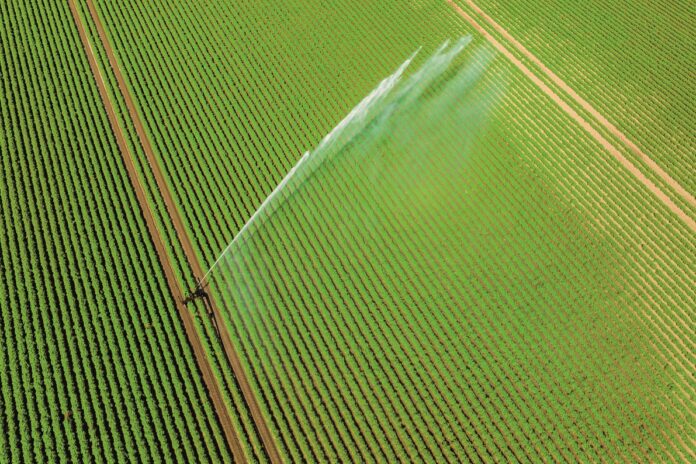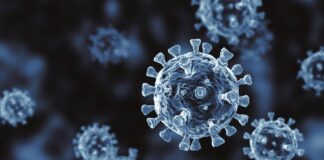Despo Fatta-Kassinos outlines the role that wastewater reuse can have in supporting agriculture – benefiting water, food and energy security.
Water scarcity is becoming a major issue in many regions, including the southwestern United States and Mexico, northern and eastern Africa, the Arabian Peninsula, and the North China Plain. These areas are already experiencing severe water imbalances that are expected to intensify under climate change, causing catastrophic losses to human life and infrastructure, and substantial economic impacts.
The UN Intergovernmental Panel on Climate Change has projected that extreme weather events will increase in both frequency and severity, and that temperatures globally will continue to rise. Extreme weather events, such as the 2023 extended heatwaves in Europe, western North America and Asia, and floods in Pakistan, Bangladesh, Australia and Libya, are occurring at increased frequency and severity, causing further disturbances to the hydrological cycle, demonstrating the need for urgent action.
Ensuring the effective management of water resources is of utmost importance for global food security and sustainable development. A recent review paper published in Nature Reviews Earth and Environment, titled ‘Sustainable wastewater reuse of agriculture’, takes a close look at the many potential benefits and the possible difficulties that using treated urban wastewater for irrigation might entail.
Right now, the world produces about 400 km3 of wastewater every year. However, less than 20% of this is treated to a useable level. Of that treated wastewater, only 2–15% is reused for irrigation, depending on its country of origin.
The primary concern of using treated wastewater for irrigation is that current treatment technologies cannot fully eliminate all micropollutants, and some of these substances could affect crops, the environment and human health. Nonetheless, it is possible to ensure a stable water supply for agriculture, even in arid regions, by using advanced water treatment and reuse systems. These systems can provide treated wastewater that is safe for use on crops – a reality that has been demonstrated with years of experience in the United States and Israel.
Net gains
Such systems could potentially provide a net positive energy output, as the energy embedded in wastewater far exceeds what is needed for treatment by a factor of nine to 10. Agriculturally useful nutrients, such as nitrogen, phosphorus and potassium, could also be recovered and reused.
Reusing treated wastewater for irrigation can significantly contribute to a circular economy and sustainable development. However, the initial steps towards making this a reality – funding and implementing advanced, sustainable treatment technologies, and gaining social acceptance – are crucial and must be prioritised.
The current mindset that sees wastewater as merely a waste to be discarded must shift. Most wastewater treatment systems today follow a linear, energy intensive approach that is not only inefficient, but also ineffective in terms of resource recovery. There is great potential, however, for these systems to evolve into something much better – a system that is fully circular and efficient at recovering resources and delivering them back into the system.
The reuse of treated wastewater for agricultural irrigation has become a vital strategy for countries facing water scarcity and requiring sustainable water management. Many regions across the globe have adopted treated water reuse schemes to enhance agricultural productivity while preserving freshwater resources.
Transferable international examples
Israel is a pioneer of treated wastewater reuse for agricultural irrigation. Because of the region’s chronic water scarcity, more than 85% of produced effluents are reused, supplying more than half of agricultural irrigation needs. Around 160,000 hectares (~45% of cultivated land) is irrigated with treated wastewater, contributing significantly to agricultural output. Key drivers include a centralised water system (where all water is state property), financial incentives (loans and grants for wastewater treatment plants, pipelines and irrigation equipment), and research assessing treated wastewater’s long-term impact on soil and crops. Strict regulations govern the health and agronomic quality of treated wastewater, ensuring sustainable usage.
Cyprus, with the highest water exploitation index in Europe (124% in 2019), reuses nearly 80% of its tertiary treated wastewater. In other European countries, treated wastewater irrigation is practised on a smaller scale. For example, treated wastewater is used for rice and vegetable irrigation in Valencia, Barcelona and Murcia, Spain, and in Milan, Italy.
In the USA, treated wastewater reuse schemes are based on comprehensive regulations. In Florida, treated wastewater is mainly reused for landscape irrigation, while in California’s Monterey County, disinfected tertiary treated wastewater plays a critical role in the ‘One Water’ management scheme. This involves treated wastewater reuse for aquifer recharge (to manage seawater intrusion) and irrigation of high-value crops such as artichokes, broccoli, cauliflower, celery, and lettuce. Additionally, it supports indirect potable reuse systems.
China has a long history of using treated wastewater in the southeastern suburbs of Beijing for irrigation, providing substantial food supplies to the city.
Australia is also increasingly adopting treated wastewater reuse in agriculture, to secure ‘climate-independent’ water supplies. In the period 2019–2020, 6,500 hm3 of water was used for agriculture, of which 124 hm3 (1.9%) was reclaimed from off-farm sources. The utilisation of treated wastewater from wastewater treatment plants located near vegetable growing areas has been particularly successful.
Using treated wastewater for crop irrigation has pros and cons. On the plus side, treated wastewater is a stable water source that enriches crops with nutrients, thus reducing the need for commercial fertilisers. But it does come with potential problems. Soil salinity could be an issue, and so could the presence of many kinds of organic chemicals in the water, including pharmaceuticals and determinants of antibiotic resistance. Careful monitoring and adherence to water quality standards are necessary to ensure the many agronomic benefits of treated wastewater do not come at too high a price.
Risk reduction
Priority should also be given to upstream measures that prevent water pollution at its source – through restrictions and the development of greener alternatives – which are more effective than traditional end-of-pipe treatments. It is crucial to implement both ‘upstream’ and ‘downstream’ measures to secure public health and the quality of the environment.
Legal and regulatory frameworks for treated wastewater reuse in irrigation vary globally, with several organisations and countries implementing standards to ensure public health, environmental protection, and sustainable agricultural practices. Below is a summary of key regulations and guidelines across various regions. Across these regions, treated wastewater reuse regulations focus on ensuring water quality, mitigating health risks, and balancing agricultural viability with environmental protection. These frameworks emphasise tailored risk assessments and comprehensive monitoring for sustainable water reuse in agriculture.
- International Organization for Standardization (ISO) Guidelines
ISO 16075:2020 provides technical standards for the reuse of treated wastewater in irrigation. It defines permissible levels of E. coli, biological oxygen demand (BOD5), total suspended solids (TSS), and turbidity, depending on water treatment levels. It also includes recommendations for agronomic parameters such as nutrient levels, salinity, and heavy metals, to protect soil and crops.
ISO 20426:2018 outlines an approach for health risk assessment and management for non-potable treated wastewater applications, ensuring that treated wastewater reuse is safe for users and the environment.
The World Health Organization guidelines also offer a global methodology for safe treated wastewater reuse, including frameworks to assess and minimise health risks. - European Union Water Reuse Regulation
The EU Regulation 2020/741 sets out minimum harmonised water quality standards and monitoring requirements for treated wastewater, categorised into four classes (A, B, C and D) based on crop type and irrigation methods. These include strict limits for E. coli, BOD5, TSS, and turbidity.
The regulation mandates the creation of a risk management plan for treated wastewater reuse systems, which addresses additional water quality issues, such as micropollutants, depending on the outcome of specific system risk assessments. Permits for treated wastewater production and supply are issued by national authorities, which can impose further conditions depending on local requirements. - US Regulatory Framework
There is no federal standard for treated wastewater reuse in the USA. Instead, individual states regulate the practice. Standards vary depending on the crop type, irrigation method, and treatment levels. For example, California’s Title 22 imposes strict criteria for total coliform bacteria, turbidity, and viruses such as F-specific bacteriophages MS-2 or poliovirus when using disinfected tertiary treated wastewater for irrigating edible crops. The US EPA Guidelines for Water Reuse provide non-binding national guidance based on risk management principles, helping states develop their own regulations. - Israeli Water Reuse Law
Israel’s 2010 water reuse law governs the unrestricted use of treated wastewater for agricultural irrigation. The law, approved by the Ministry of Health, provides a permitting process for treated wastewater irrigation, ensuring public health and environmental protection. - Australian Guidelines
Australia’s 2006 Guidelines for Water Recycling provide recommendations for the safe reuse of treated wastewater, though they are not mandatory. These guidelines are based on a health and environmental risk management approach, offering flexibility to set water quality standards depending on the intended use of treated wastewater.
The global opportunity
At the global level, especially in developing countries, there is incredible potential to transform wastewater reuse into a viable and valuable practice. This transformation can occur through effective management practices that are enforced by suitable legal and regulatory frameworks. These frameworks must be adapted to local conditions, sufficiently implemented, and empowered by political, institutional and financial support. They also need to be transparent and involve citizens in decision-making. In addition, regulations should encourage circularity in wastewater management by permitting recovered resources, such as nutrient fertilisers, to enter the market. l
The author:
Professor Despo Fatta-Kassinos is Head of the Laboratory of Environmental and Engineered Water Processes and Systems at the Department of Civil and Environmental Engineering, Nireas International Water Research Center, University of Cyprus
More information
www.nature.com/articles/s43017-024-00560-y
Key highlights of the review paper ‘Sustainable wastewater reuse of agriculture’, published in Nature Reviews Earth and Environment
- More than 80% of the world’s wastewater is released untreated, where it can infiltrate groundwater and flow into rivers and lakes. Sometimes this untreated water is used – either directly or indirectly – in the production of food and can pose the risk of contamination.
- The implementation of advanced water treatment and reuse systems can ensure a reliable and safe supply of water for agriculture, potentially replacing an equal amount of fresh water that could be used for drinking or other essential purposes.
- Reusing treated wastewater for irrigation can counteract the water imbalances that plague agriculture in many regions. Expanding this practice, particularly in areas that are already short of water, has the potential to keep food production levels up and even boost them. In places where treated wastewater is available, and systems are in place to deliver it to farms, this resource can make a considerable difference.
- Ongoing research and site-specific assessments are essential for making advanced wastewater treatment processes cost effective and sustainable.
- Wastewater treatment plants (WWTPs) have the potential to become facilities for recovering water, energy, and nutrients. This transformation can
- occur because technological opportunities exist to implement the kinds of changes needed to achieve this new management of WWTPs. One significant prospect is that these technological changes can lead not only to a transformation of the role of WWTPs, but also enable them to become energy-carbon neutral.
- A detailed and all-encompassing regulatory framework is needed to ensure the smooth operation and sustainability of treated wastewater reuse systems. These frameworks are necessary not only for public health and environmental protection, but also to reassure the public.








